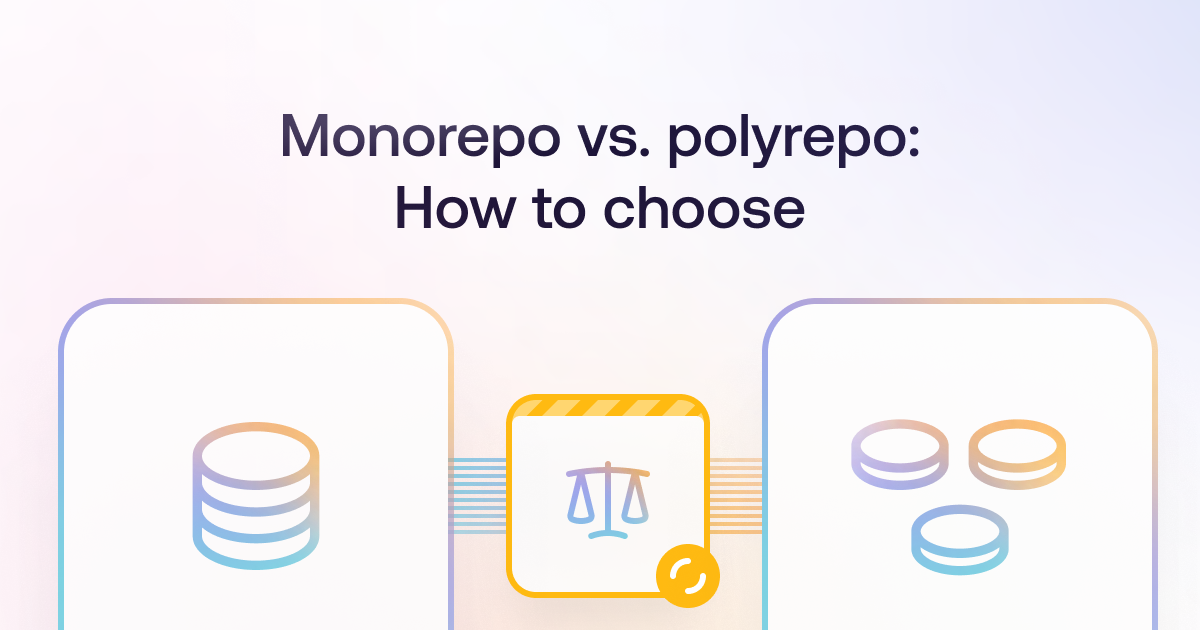Polyrepo
(2025-09-23T19:40.202Z)
Perplexity Query
(2025-09-23T19:40
.202Z)
Question:
Write a comprehensive one-page article about "Polyrepo".
Model: sonar-pro
Polyrepo: A Comprehensive Overview
Introduction
A polyrepo, short for poly-repository, is a software development approach where each project, service, or component is managed in its own separate repository.
[uyco8u]
[8cah5n]
This structure offers significant modularity and is an increasingly popular choice for engineering teams that value flexibility, autonomy, and independent scaling of software projects. Understanding the polyrepo approach is crucial as organizations modernize their architectures and seek efficient ways to scale development in complex environments.

Main Content
A polyrepo strategy decentralizes code management, with each project or service having its own dedicated repository.
[v9qayg]
[8cah5n]
For example, an organization might maintain separate repositories for its frontend, backend, and shared utilities, rather than storing all code in a single monolithic repository.
[uyco8u]
This structure typically looks like the following:
- A repository for the frontend application
- A separate repository for the backend API
- Individual repositories for shared libraries or Microservices
This setup enables project independence, meaning work on one component does not necessarily impact development velocity or build processes in others.
[uyco8u]
For example, a team building a mobile app can iterate rapidly on their specific codebase without being blocked by ongoing server-side changes. Additionally, each repository can be managed with customized CI/CD pipelines, allowing teams to deploy and test at their own cadence.
[uyco8u]
[v8sjgl]
In regulated industries or organizations with sensitive data, individual repositories can have granular access controls, protecting proprietary or confidential code.
[v9qayg]
[8cah5n]
Real-world applications of polyrepos are particularly common in the Microservices ecosystem, where each service is autonomous and can be deployed independently.
[v8sjgl]
For instance, a fintech company might keep payment processing, user authentication, and transaction analytics in separate repos, allowing specialized teams to own each domain. Other scenarios include open-source projects, where each library or tool is developed and versioned in its own public repository for easier collaboration and distribution.
There are several notable benefits to polyrepo structures:
- Enhanced security: Access can be restricted on a per-repository basis, crucial for compliance. [v9qayg]
However, polyrepos introduce challenges as well:
- Dependency Management becomes more complex, often requiring additional tooling to keep shared libraries or APIs in sync across repositories. [v9qayg] [uyco8u]

Current State and Trends
As cloud-native patterns and microservices architectures grow more prevalent, adoption of polyrepos is on the rise, especially among organizations seeking modularity and rapid iteration with distributed engineering teams.
[v8sjgl]
Technologies such as GitHub, GitLab, and advanced CI/CD pipelines cater naturally to this approach, enabling robust automation across many small repositories.
[uyco8u]
While large companies like Google and Facebook have historically favored Monorepos, many startups and mid-sized businesses now gravitate towards polyrepos to better match modern development workflows.
[v9qayg]
[v8sjgl]
Recent developments include the emergence of tools to mitigate polyrepo challenges, like dependabot for automated dependency management or dedicated artifact repositories for sharing reusable code. There's also a trend towards hybrid solutions, where some code is grouped in monorepos but ancillary services or libraries are split into polyrepos, offering the best of both worlds.

Future Outlook
The continued shift towards microservices, DevOps, and remote work suggests polyrepo adoption will expand. As the ecosystem matures, expect to see improved tools for automated dependency management, cross-repo integration, and unified observability, making the polyrepo approach more accessible and reducing its operational overhead. In the long term, polyrepos are poised to be a key enabler of scalable, secure, and highly collaborative software delivery in complex digital environments.
Conclusion
Polyrepos empower organizations with flexibility, scalability, and autonomy while introducing new coordination challenges. As development infrastructures evolve, the polyrepo paradigm will play an essential role in shaping how modern software is built and maintained.
[v9qayg]
[uyco8u]
[8cah5n]
Citations
[v9qayg] 2025, Sep 19. Evaluating and Choosing Between Monorepo vs. Polyrepo .... Published: 2024-03-08 | Updated: 2025-09-19
[uyco8u] 2025, Sep 15. ️ Monorepo vs. Polyrepo: Choosing the Right Strategy for Your .... Published: 2024-11-18 | Updated: 2025-09-15
[8cah5n] 2025, Sep 05. Monorepo vs. Polyrepo: A Strategic Choice for Software Development. Published: 2025-08-11 | Updated: 2025-09-05
[v8sjgl] 2025, Sep 23. Monorepo vs. Polyrepo: How to Choose Between Them | Buildkite. Published: 2024-03-07 | Updated: 2025-09-23
[5]: 2025, Sep 03. Monorepo Vs Polyrepo Architecture In Software Development - Intuji. Published: 2023-05-31 | Updated: 2025-09-03